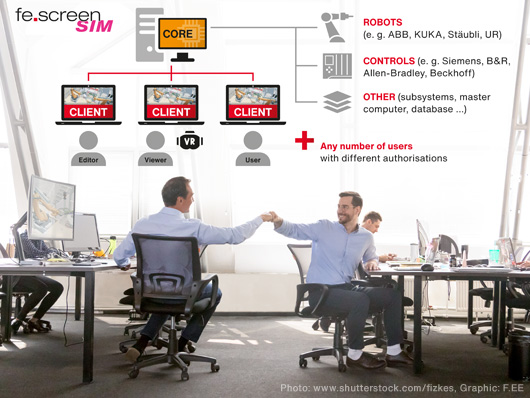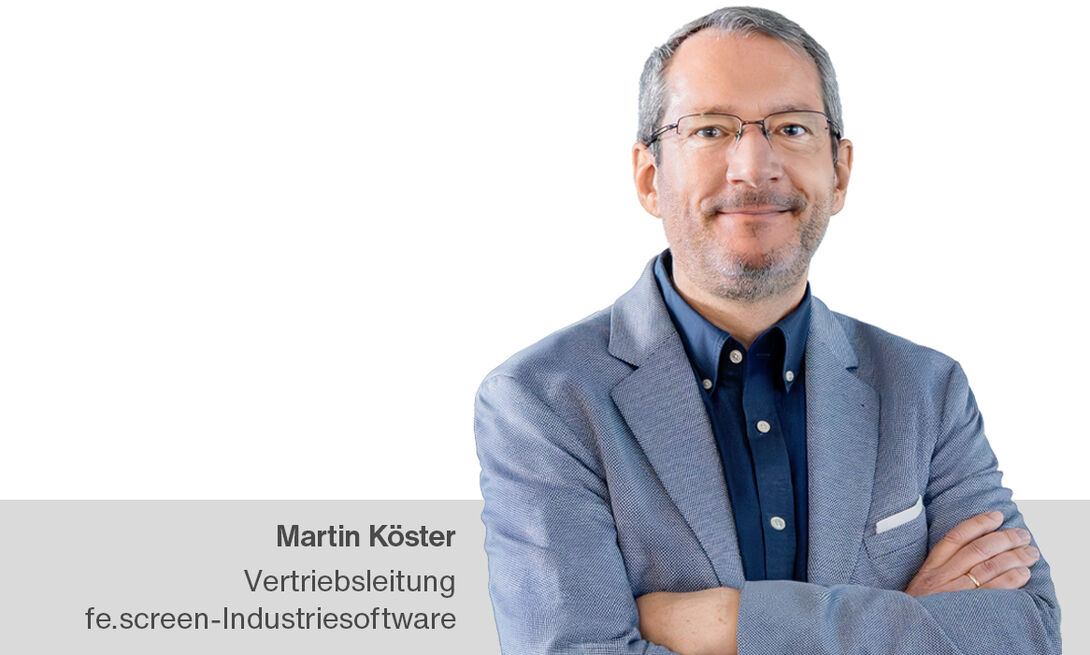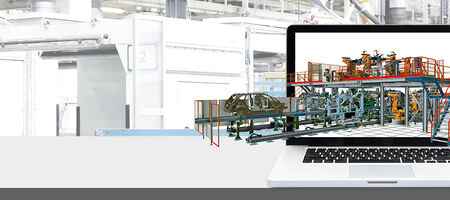Reaching the goal together - With multi-user capability to efficient virtual commissioning
"Efficiency" is one of the main criteria in practice when creating digital twins - especially with regard to implementation in home office times and across location boundaries. Thus, "multi-user capability" - i.e. the simultaneous work of several users on a simulation - has become a "game changer" for large and complex plants, in addition to the quality of the data used as the basis for model creation in the context of virtual commissioning.
If several people work in parallel at the same time, time deficits in the project can sometimes be compensated for. The important thing here is that simulation and model creation can be carried out in parallel at any time without restrictions. In other words, it must not be necessary to switch between simulation and editing mode in the simulation software. Only in this way is it possible to build up the model while at the same time simulating and verifying already completed areas and at the same time presenting initial results on the digital model to the customer in a VR environment. The digital twin is always "live" - almost like in online computer games, where true multi-user capability has long been "state of the art".
Requirements that simulation software should have
In order to ensure efficient virtual commissioning, the simulation tool should enable clear and intuitive creation of plant models and offer open interfaces for taking over existing data from various data sources - such as CAD, Excel, EPLAN, etc. This saves manual input of data. This saves the manual input of this information. The behaviour of the digital plant twin must be completely identical to that of the physical plant with regard to its properties in terms of signals and processes. This means that errors can already be detected and optimisations carried out during virtual commissioning, which ensures considerable time and cost savings during real commissioning. It is also important that a physical simulation forms the basis of the calculation in the model for virtual commissioning. This eliminates the need to define transport routes or material flows in advance. This is the decisive difference between a simulation and an emulation.

This is how multi-user capability works
As shown in the graphic using the example of the 3D simulation software "fe.screen-sim", in the case of joint work on the digital twin, several users with so-called "clients" connect to a "core". In the "core", all calculations of the model are carried out and the data exchange to the connected real or virtual devices of the plant - such as robots and controllers - is carried out by means of "hardware in the loop" or "software in the loop". Based on a defined authorisation system, appropriate roles are assigned to the clients involved, which ensures that users can only perform work on the model for which they are authorised.
Conclusion
Particularly in times of home offices and the associated different locations where project participants are active, multi-user capability greatly facilitates collaboration during virtual commissioning. The advantages also come into play especially in time-critical projects, as the multi-user capability allows additional resources to be deployed at short notice and without any problems in order to accelerate the creation of the digital twin and thus the virtual commissioning.

Your personal contact person – for more clearness
You are a project or department manager and are faced with the question of how to set up a digital twin for your project? We would be happy to talk to you personally about your requirements, the time frame, the possible project approach and give you an initial cost estimate.

